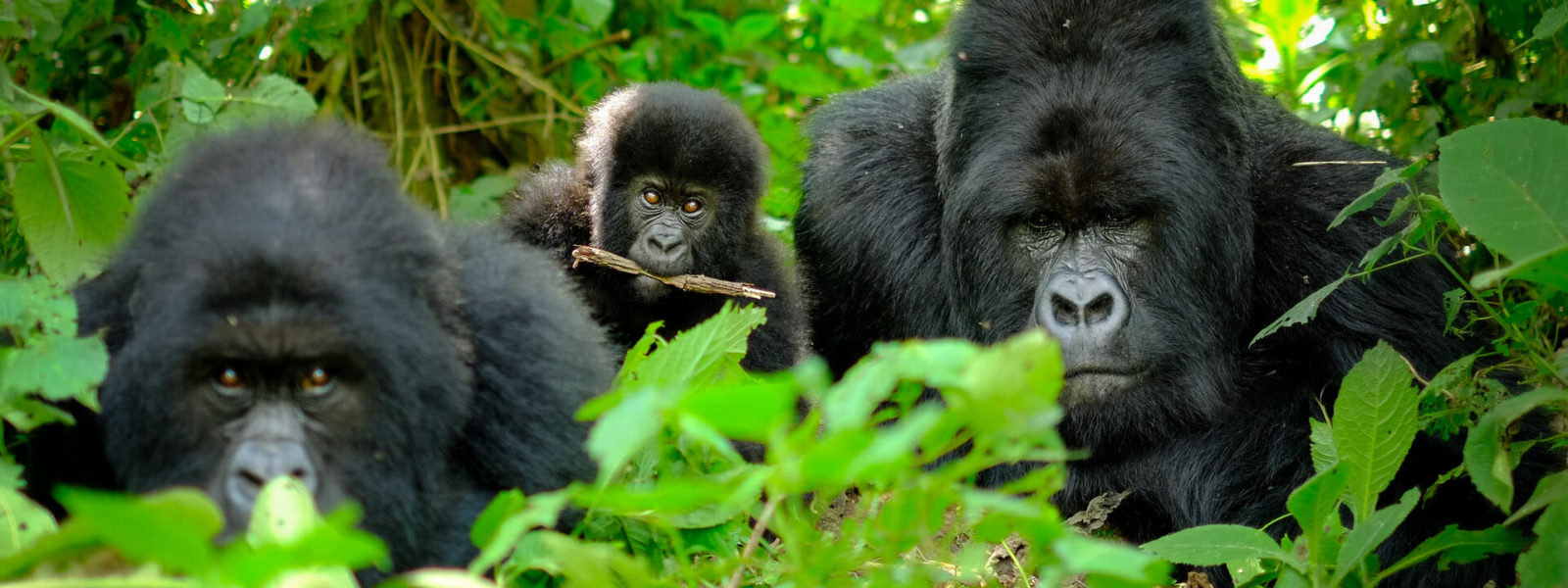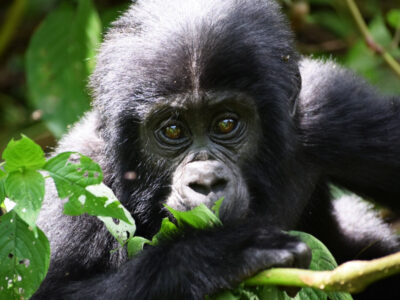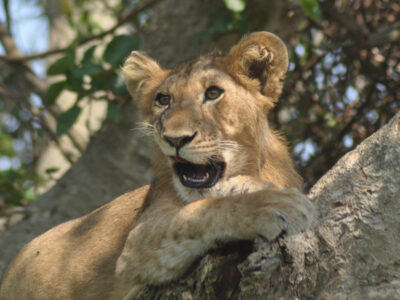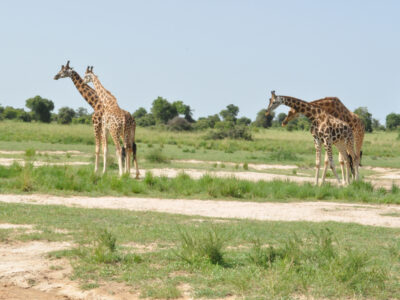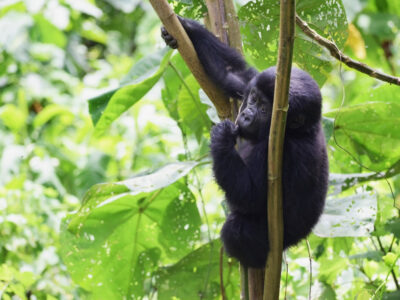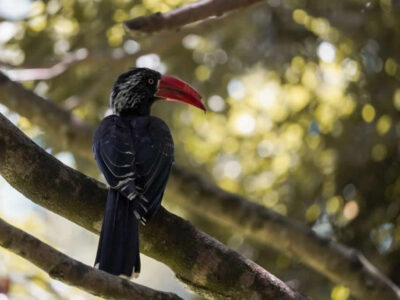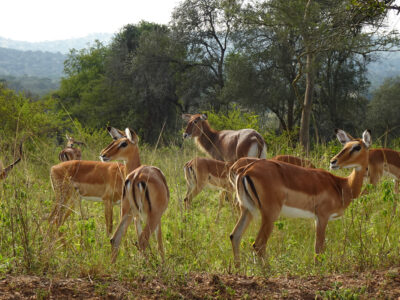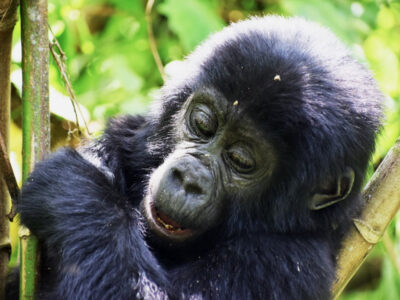Travel to the Bwindi Impenetrable National Park in southwest Uganda, which is bordered by the D.R. Congo Virunga National Park, for a unique and unforgettable experience. In 1992, the 331 square kilometers-large Bwindi has designated a national park, and in 1994, it was recognized as a World Heritage site. This park is home to about half of the mountain gorillas that have been habituated globally (over 400 mountain gorillas). Bwindi, which means “impenetrable” in the native tongue, is evident when you visit the park. The 331 km2 of tangled vegetation was spread across a severely split environment with high, windy hills and steep, slick lowlands. But even if the terrain is difficult to navigate, it will be worthwhile.
One of the best primate experiences in the world is a trip through this, one of Africa’s oldest rainforests, in search of the endangered mountain gorilla. Additional 120 mammals are also protected in this naturally diverse area, including several primate species including baboons and chimpanzees, elephants, and antelopes. The Bwindi impenetrable forest supports 350 different bird species, including 23 endemics to the Albertine Rift.
More than 20 habituated gorilla families have been created in Bwindi Impenetrable National Park’s four sectors, including Buhoma, Nkuringo, Ruhija, and Rushaga. According to their acquired gorilla permits, tourists trekking the critically endangered gorillas are assigned to these areas and their gorilla groups. You need a gorilla permit to visit the Bwindi and Mgahinga national parks where these endangered gentle giant gorillas live in their native settings in order to see them. Reservations for gorilla permits, which cost $700, can be purchased at the reservation desks of the Uganda Wildlife Authority or through authorized tour operators; however, in order to prevent delays, reservations must be made months in advance of departure.
Mountain gorillas are severely endangered primates found in bamboo and tropical rainforests in East Africa’s Bwindi Impenetrable, Mgahinga, and Virunga national parks in Uganda, Rwanda, and the Democratic Republic of the Congo. Due to poaching and mass executions, mountain gorillas were on the verge of extinction, but because of significant conservation efforts, their numbers are now on the rise and they are no longer threatened by poaching.
Mountain gorillas have interesting and amazing certainties you need to discover and these include the following;
They are wandering creatures
Mountain gorillas live in transient regions rather than a stable base of operations. They move a few kilometers each day to build their nests in the wild, stay there for a few days before leaving, and do this as they move from one location to another. Because of this, they are constantly wandering in the jungle, and occasionally they even cross international borders, like the Uganda gorillas traveling to Congo and vice versa. Because they travel frequently and in the depths of the forest, following them is difficult and time-consuming.
Mountain gorillas have 98% of human DNA
Incredibly, mountain gorillas have 98 percent human DNA. This means that due to their close biological resemblance to humans, mountain gorillas are susceptible to catching human diseases like the common cold, which can be quite dangerous for them as they do not have human-like immune systems.
They are considered adults at 8 years
Up until the age of three and a half, they are considered babies, and at eight, as adults. They have a lifespan of more than 40 years. Adult males between the ages of 8 and 12 are known as silver bucks due to the development of a silver strip of hair on their backs. In these situations, the male silver bucks are in charge of gathering the young and building nests to serve as safe havens.
They live in groups
It is known that they live in families. Each family has about 10 members total, including parents and kids. Female gorillas start reproducing at age 10 and start giving birth to 1-2 young after an eight and a half month gestation period, just like women do. Typically, they have 2 to 6 children during their lifespan.
They are considered intelligent creatures
Mountain gorillas are intellectual because they have DNA similar to humans and can interact with one another by producing noises and utilizing verbs. They may be seen banging their chests, making gestures, grunting, and hooting as they try to communicate with one another. They have a higher larynx than humans do and a softer palate, which allows them to talk in complete sentences.
They are considered the largest and most powerful primate
They are the largest and most powerful primates; a male gorilla can weigh 185 kg and stand 170 cm tall. In addition, male gorilla giants are shy and strong to the point that they will never fight or chase anyone looking in their eyes unless they are only threatened; they can be forced to charge and attach as a way to show anger, but it only serves as an attempt to bluff you to protect and defend his family.
They are critically endangered species
As endangered primates, they face a threat of extinction and are hence vulnerable. Due to human-made activities like farming and deforestation, the vast majority of people are encroaching on forest areas, making them unsuitable for settlement and destroying the forest. The widespread poaching, which sometimes traps mountain gorillas in snares intended to catch small antelopes instead, is another danger to mountain gorillas.
They are herbivorous primates
They are herbivorous and consume primarily leaves, plants, fruit barks, and sodium-rich ants throughout the day. The gorillas’ daily consumption of up to 60 pounds of leaves and vegetables may give them the appearance of being enormous, but they are not obese because of the thick fur covering their bodies, which helps them regulate body temperature because they live in high mountains where the temperature often drops below the freezing point.
They live in high altitudes of tropical rainforest
Mountain gorillas are most commonly found in this park because of their dense forest, which is where they dwell in a high altitude of dense tropical rainforest and baboon woodlands that are surrounded by trees and crops. These attitudes may be found in the Virungas, volcanoes, Mgahinga, and Bwindi impenetrable national parks where they reside, between 1,500 and 4,000 meters above sea level. Gorillas can survive in these climatic conditions because of their thick fur, which serves to regulate body temperatures.
They build their nests on the ground
Mountain gorillas build their underground nests, which can be found on the ground or in trees, using tree branches and leaves. The adult silverbacks take the lead in locating secure nesting sites by making sure it is a secluded, abundant region of wild nettles. They are in charge of both fighting and guarding. A silverback, on the other hand, rarely considers other people’s viewpoints, particularly those of youth. If one does, if it deviates from the path, it is swiftly reined in.

